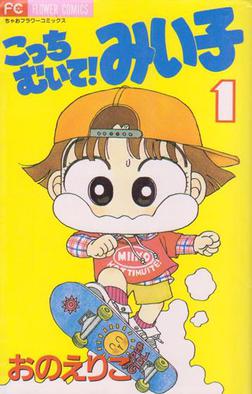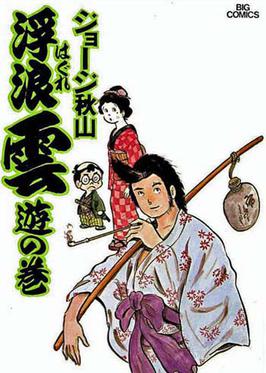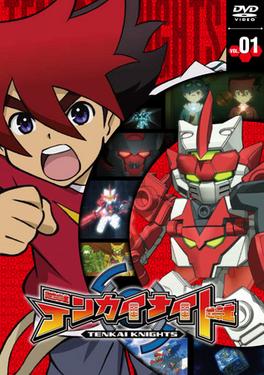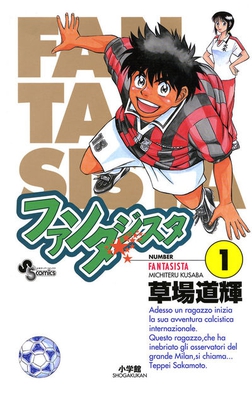
Shogakukan Inc. is a Japanese publisher of dictionaries, literature, comics (manga), non-fiction, DVDs, and other media in Japan.

Yaiba is a Japanese manga series written and illustrated by Gosho Aoyama. It was serialized in Shogakukan's shōnen manga magazine Weekly Shōnen Sunday from September 1988 to December 1993, with its chapters collected in twenty-four tankōbon volumes. It was adapted into a 52-episode anime television series titled Kenyū Densetsu Yaiba, aired on TV Tokyo from April 1993 to April 1994. A second anime adaptation has been announced.

Densetsu no Stafy 4 is a platform video game developed by Tose and published by Nintendo for the Nintendo DS. It is the fourth game in The Legendary Starfy series. As with the other games in the series, Densetsu no Stafy 4 features Stafy, known as Starfy in Western regions, as the main character. He is joined by his sister Starly and his friend Moe the clam. The three of them help out other undersea creatures and fights numerous villains.

Tose Co., Ltd. is a Japanese video game development company based in Kyoto. It is mostly known for developing Nintendo's Game & Watch Gallery series, various Dragon Ball games, as well as other Nintendo products. Tose has developed or co-developed over 1,000 games since the company's inception in 1979, but is virtually never credited in the games themselves. Tose maintains a policy of having no creative input into the work they do, going so far as to refuse to put their names in the credits for most of the games they work on. As such, Tose has gained a reputation for being a "ghost developer".

Bokurano: Ours is a Japanese manga series written and illustrated by Mohiro Kitoh. It was serialized in Shogakukan's seinen manga magazine Monthly Ikki from November 2003 to June 2009, with its chapters collected in 11 tankōbon volumes. It is about a group of middle-school students who, under the pretense of participating in a game, agree to the task of piloting a giant mecha in a series of battles where the survival of Earth is dependent on their continuing to win, and they gradually realise how high are the stakes of this supposed game.

Densetsu no Stafy is a platform video game developed by Tose and published by Nintendo for the Game Boy Advance system exclusively in Japan on September 6, 2002. It is the first game in the series The Legendary Starfy.

Densetsu no Stafy 2 is a platform video game developed by Tose and published by Nintendo for the Game Boy Advance in Japan on September 5, 2003. It is the second game in The Legendary Starfy series.

Densetsu no Stafy 3 is a platforming video game developed by Tose and published by Nintendo for the Game Boy Advance only in Japan on August 5, 2004. It is the third game in The Legendary Starfy series, as well as the third and last title of the series developed and released for the Game Boy Advance. Later, its sequel, Densetsu no Stafy 4, was developed for the Nintendo DS.

The Legendary Starfy, known as Densetsu no Stafī: Taiketsu! Daīru Kaizokudan in Japan, is a 2008 platform video game developed by Tose and published by Nintendo for the Nintendo DS handheld video game console. It is the fifth game in The Legendary Starfy video game series. On June 8, 2009, the game became the first, and so far the only, in the series to be released outside Japan.

Kocchi Muite! Miiko is a Japanese shōjo comedy manga series by Eriko Ono. It has been published by Shogakukan in Ciao since 1995 and collected in 37 bound volumes. It is a sequel to an earlier series, Miiko desu!, and depicts the home and school life of a cheerful and energetic fifth-grade girl named Miiko.

Haguregumo is a Japanese manga series written and illustrated by George Akiyama. It has been serialized by Shogakukan in Big Comic Original from 1973 to 2017 and collected in 112 tankōbon volumes. Haguregumo received the 1979 Shogakukan Manga Award for the general category.

Hidamari no Ki is a Japanese manga series written and illustrated by Osamu Tezuka about a friendship between a samurai and a doctor in the final decade of the Tokugawa Shogunate. Hidamari no Ki received the Shogakukan Manga Award in 1984 for general manga.

Kyūkyoku Chōjin R is a Japanese manga series written and illustrated by Masami Yuki. It was serialized in Shogakukan's Weekly Shōnen Sunday from 1985 to 1987. The series revolved around a teenage robot named R. Ichiro Tanaka. Later, it was revealed that R's creator Dr. Narihara only built R for a failed attempt to take over the world.

Tenkai Knights is a 2013 Japanese-Canadian anime series based on a toy line by Spin Master, produced by Shogakukan-Shueisha Productions, Spin Master Entertainment and TV Tokyo and animated by Bones. It was directed by Mitsuru Hongo, with Jin Kanada and Hiroshi Ōnogi handling series scripts, Toshihiro Kawamoto and Shigeru Fujita designing the characters, Takayuki Yanase and Fujirō designing the 3DCG characters and MONACA composing the music. The series officially aired on Cartoon Network in the United States on August 24, 2013 and in Canada on Teletoon on September 28, 2013. After a year, it premiered on TV Tokyo and its affiliate stations on April 5, 2014.

Yoban Sādo is a Japanese sports manga series written and illustrated by Gosho Aoyama. It was published in Shogakukan's shōnen manga magazine Shōnen Sunday Zōkan from 1991 to 1993, with its chapters collected in a single tankōbon volume. The story depicts the final tournament of high school baseball, at the Hanshin Koushien Stadium in Nishinomiya. The story's main characters are the high school baseball players Shigeo Nagashima and Kazuhisa Inao, whose names are taken from real-life Japanese baseball players Shigeo Nagashima and Kazuhisa Inao.

The Legend of the Strongest, Kurosawa! is a Japanese manga series written and illustrated by Nobuyuki Fukumoto. It was published in Shogakukan's seinen manga magazine Big Comic Original from 2002 to 2006. It was followed by a sequel Shin Kurosawa:Saikyō Densetsu, which ran in the same magazine from 2013 to 2020. A spin-off focused on the first series' secondary character Shūhei Nakane, titled Saitsuyo Densetsu Nakane, was serialized on Yawaraka Spirits website from 2017 to 2020.

Fantasista is a Japanese manga series written and illustrated by Michiteru Kusaba. It was serialized in Shogakukan's Weekly Shōnen Sunday from July 1999 to March 2004. Its chapters were collected and published in twenty-five tankōbon volumes. A sequel manga, Fantasista Stella, was serialized in Weekly Shōnen Sunday from October 2012 to August 2015, which was collected into fourteen tankōbon volumes. A 3-episode anime OVA, produced by Xebec, was broadcast on Tokyo MX from December 8 to December 22, 2015. The episodes were released on DVD with volumes 8, 9, and 10 of the manga from September 2014 to February 2015.
















